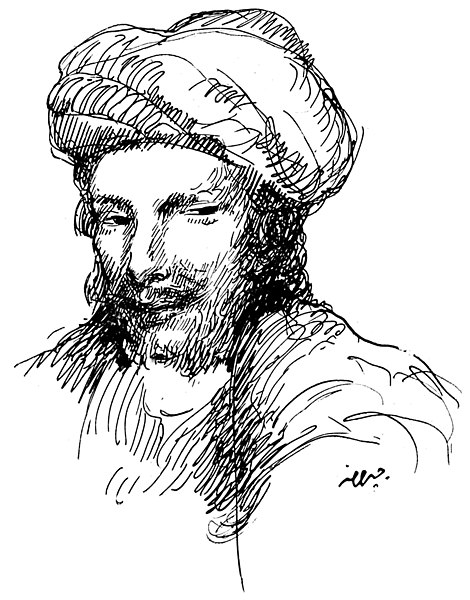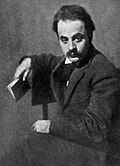Papeles:Abu Nuwas.jpg

Kadakkel daytoy a panagipadas: 470 × 600 dagiti piksel. Sabali kadagiti resolusion: 188 × 240 dagiti piksel | 376 × 480 dagiti piksel | 833 × 1,063 dagiti piksel.
Kasisigud a papeles (833 × 1,063 dagiti piksel, kadakkel ti papeles: 323 KB, kita ti MIME: image/jpeg)
Pakasaritaan ti papeles
Pinduten iti petsa/oras tapno makita ti papeles a kas naiparang iti dayta a panawen.
| Petsa/Oras | Bassit a ladawan | Dagiti rukod | Agar-aramat | Komentario | |
|---|---|---|---|---|---|
| agdama | 20:17, 7 Agosto 2019 |  | 833 × 1,063 (323 KB) | FunkMonk | Bigger. |
| 11:14, 2 Agosto 2008 |  | 242 × 305 (36 KB) | FunkMonk | {{Information |Description=Abu Nuwas, Drawing by Kahlil Gibran al-Funun 2, no. 1 (June 1916) |Source=http://www.al-funun.org/al-funun/images/index.html |Date=June 1916 |Author=Kahlil Gibran |Permission= |other_versions= }} {{ImageUpload|basic}} |
Panagusar iti papeles
Ti sumaganad a panid ket agus-usar iti daytoy a papeles:
Global a panagusar ti papeles
Dagiti sumaganad a wiki ket agus-usar iti daytoy a papeles:
- Panagusar idiay af.wikipedia.org
- Panagusar idiay als.wikipedia.org
- Panagusar idiay alt.wikipedia.org
- Panagusar idiay an.wikipedia.org
- Panagusar idiay ar.wikipedia.org
- Panagusar idiay ar.wikiquote.org
- Panagusar idiay ar.wikisource.org
- Panagusar idiay arz.wikipedia.org
- Panagusar idiay ast.wikipedia.org
- Panagusar idiay av.wikipedia.org
- Panagusar idiay azb.wikipedia.org
- Panagusar idiay az.wikipedia.org
- Panagusar idiay bat-smg.wikipedia.org
- Panagusar idiay ba.wikipedia.org
- Panagusar idiay be-tarask.wikipedia.org
- Panagusar idiay be.wikipedia.org
- Panagusar idiay bg.wikipedia.org
- Panagusar idiay bi.wikipedia.org
- Panagusar idiay bjn.wikipedia.org
- Panagusar idiay bn.wikipedia.org
- Panagusar idiay br.wikipedia.org
- Panagusar idiay bs.wikipedia.org
- Panagusar idiay bxr.wikipedia.org
- Panagusar idiay ca.wikipedia.org
- Panagusar idiay ce.wikipedia.org
- Panagusar idiay ckb.wikipedia.org
- Panagusar idiay co.wikipedia.org
- Panagusar idiay cs.wikipedia.org
- Panagusar idiay cy.wikipedia.org
- Panagusar idiay da.wikipedia.org
- Panagusar idiay de.wikipedia.org
- Panagusar idiay el.wikipedia.org
- Panagusar idiay en.wikipedia.org
Kitaen ti adu pay a global a panagusar iti daytoy a papeles.

